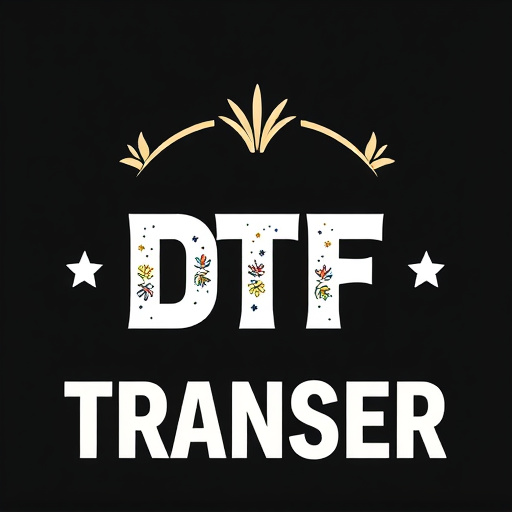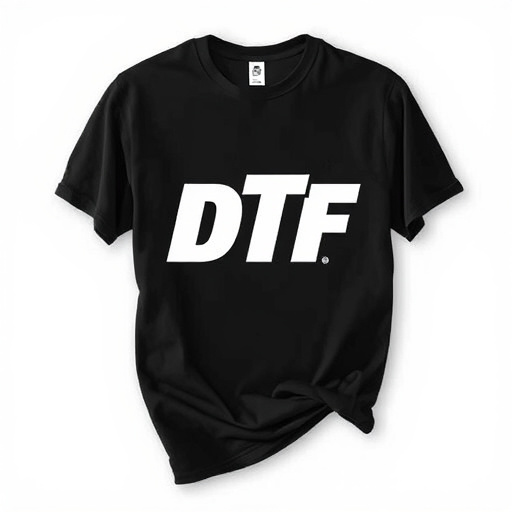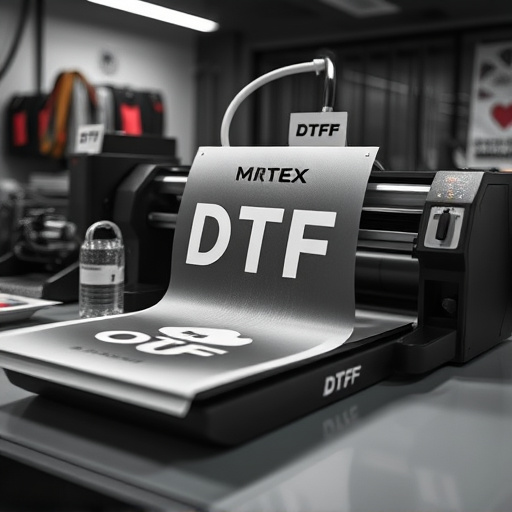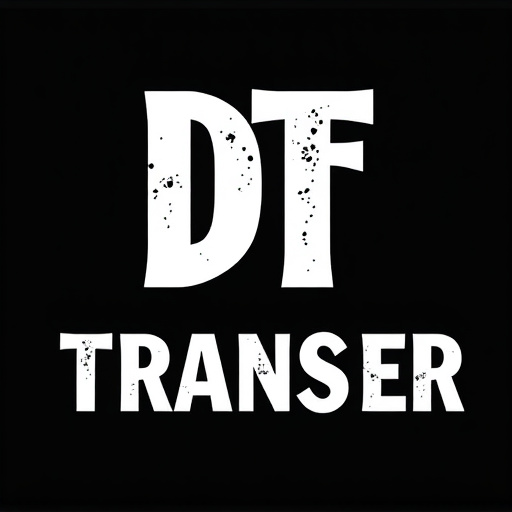Direct-to-Film (DTF) transfers are a cutting-edge printing method that produces vibrant, long-lasting prints on various surfaces. Using UV or LED lights to cure ink, DTF offers high color accuracy, crisp details, and resistance to fading for both indoor and outdoor use. This versatile technology has gained popularity due to its ability to create customized products and marketing collateral. The process involves optimizing designs digitally, printing them onto transparent film, and using this as a negative mask over substrates for curing. DTF transfers are transforming industries by enabling cost-effective, high-resolution printing on diverse materials, enhancing product customization, and streamlining workflows. Quality control is crucial in the professional DTF sector to ensure print longevity, with rigorous inspections at every stage. Businesses stay competitive by using premium materials, calibrating equipment, implementing efficient file management systems, and offering a range of customization options while maintaining print quality.
“Unleash the power of direct-to-film (DTF) transfers with our comprehensive guide tailored for professionals. This article delves into the art and science of creating exceptional DTF prints, catering to diverse customer needs. From understanding the fundamentals of DTF technology to exploring advanced printing techniques, we equip businesses with insights for optimal results. Discover the benefits across various sectors, learn quality control measures, and embrace best practices to dominate the DTF printing landscape.”
- Understanding Direct-to-Film (DTF) Transfers: A Comprehensive Guide
- The Equipment and Technology Behind DTF Printing
- Process of Creating High-Quality DTF Prints for Customers
- Benefits and Applications of DTF Transfers in Various Industries
- Quality Control and Assurance in DTF Transfer Services
- Best Practices for Professional DTF Printing Businesses
Understanding Direct-to-Film (DTF) Transfers: A Comprehensive Guide

Direct-to-Film (DTF) Transfers are a cutting-edge printing process that allows for the reproduction of images and graphics directly onto various surfaces, most commonly film or other durable materials. This innovative technique has revolutionized the way businesses create and display visuals, offering an alternative to traditional printing methods. With DTF, designs can be easily transferred to a wide array of objects, from promotional items like t-shirts and mugs to signage and even digital displays.
The process involves several key steps. First, the desired image or graphic is digitally prepared and optimized for printing. Then, specialized equipment uses UV or LED lights to cure and bond the ink particles onto the surface, ensuring a long-lasting, high-quality finish. DTF prints are renowned for their vibrant colors, crisp details, and resistance to fading, making them suitable for both indoor and outdoor applications. This technology has gained immense popularity due to its versatility, enabling businesses to create customized products and marketing collateral that truly stand out in today’s competitive market.
The Equipment and Technology Behind DTF Printing

The professional creation of direct-to-film (DTF) transfers involves a sophisticated combination of equipment and technology designed to deliver high-quality prints. At the heart of this process are advanced DTF printers, which utilize inkjet technology to precisely deposit pigment onto the film surface. These printers are calibrated to ensure consistent color accuracy and precise resolution, resulting in detailed and vibrant DTF prints.
The process extends beyond printing, however, as specialized software plays a crucial role in preparing and optimizing the artwork for DTF transfer. This software allows designers to manipulate images, adjust color profiles, and even simulate the final print outcome before initiating the transfer. Additionally, automated cutting machines are employed to precisely cut out the design from the film, minimizing waste and ensuring sharp, clean edges. These technological advancements have revolutionized the DTF Transfer process, making it a preferred choice for customers seeking high-quality, customized prints.
Process of Creating High-Quality DTF Prints for Customers

The process of creating high-quality Direct-to-Film (DTF) transfers for customers involves several meticulous steps to ensure optimal results. It begins with receiving customer art or designs, which are then digitally prepared and optimized for DTF printing. Skilled technicians use specialized software to ensure the design is suitable for the medium, making any necessary adjustments for color accuracy, resolution, and overall visual appeal.
Once ready, the design is printed onto a transparent film using high-resolution printers. This film acts as a negative mask, which is then placed over the final substrate—be it glass, acrylic, or other materials. A UV light source exposes the substrate through the film, curing the resin and creating a precise, long-lasting DTF transfer. The process demands precision and expertise to achieve sharp lines, vibrant colors, and a seamless integration of the design onto the chosen surface.
Benefits and Applications of DTF Transfers in Various Industries

Direct-to-film (DTF) transfers offer a multitude of benefits across various industries, revolutionizing the way businesses create and implement branded materials. This innovative printing method eliminates the need for costly film positives and plates, making it an economical choice for short-run, custom designs. DTF allows for precise, high-resolution prints on a wide range of substrates, from clothing and textiles to cardboard and plastics, enabling businesses to produce unique, on-demand products with speed and efficiency.
In the retail sector, DTF printing empowers brands to create captivating in-store displays and pop-up shops with personalized designs. The entertainment industry leverages DTF for quick production of promotional merchandise and event memorabilia. Moreover, DTF transfers excel in the advertising realm, enabling swift customization of signage, banners, and outdoor advertising materials. Its versatility extends to fashion, where designers can effortlessly print intricate patterns and graphics directly onto clothing fabrics, fostering creativity and streamlining production workflows.
Quality Control and Assurance in DTF Transfer Services

In the professional realm of direct-to-film (DTF) transfer services, quality control and assurance are paramount to ensuring customer satisfaction and the longevity of the final prints. Rigorous QC processes involve meticulous inspection at every stage of the DTF printing journey, from inputting source materials to outputting the final product. Every aspect is scrutinized, including color accuracy, image resolution, and consistent film thickness, to meet stringent industry standards and client expectations.
Advanced technology plays a crucial role in facilitating these checks. Specialized equipment and software are employed to detect even subtle anomalies, ensuring that each DTF transfer adheres to the highest quality benchmarks. Regular calibration and maintenance of these tools further solidify the consistency and reliability of the printing process, resulting in vibrant, precise, and durable DTF prints.
Best Practices for Professional DTF Printing Businesses

In the professional realm of direct-to-film (DTF) transfers and printing, maintaining high standards is paramount to customer satisfaction. Best practices for DTF businesses involve adhering to strict quality control measures throughout the production process. This includes using top-grade materials to ensure vibrant, long-lasting colors in each DTF print. Regular calibration and maintenance of printing equipment are also essential to achieve precise, consistent results.
Moreover, efficient file handling is critical. Businesses should enforce standardized file formats, resolutions, and specifications to streamline the workflow and minimize errors. Offering a range of customization options while maintaining consistency in quality fosters customer trust and encourages repeat business. Additionally, staying updated with industry trends and advancements in DTF technology enables businesses to adapt and deliver cutting-edge solutions to their clients.














